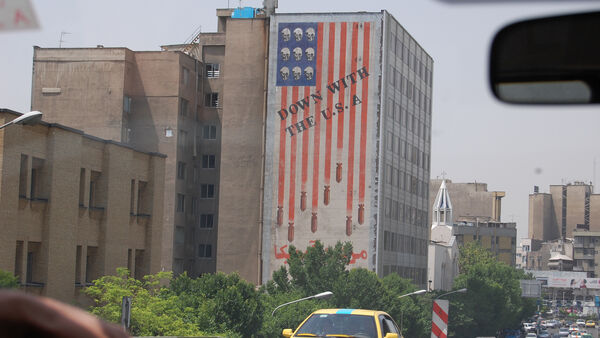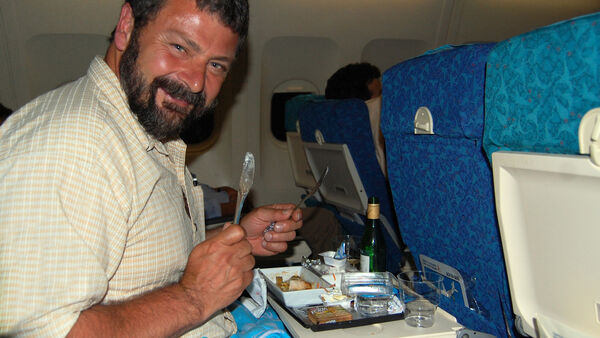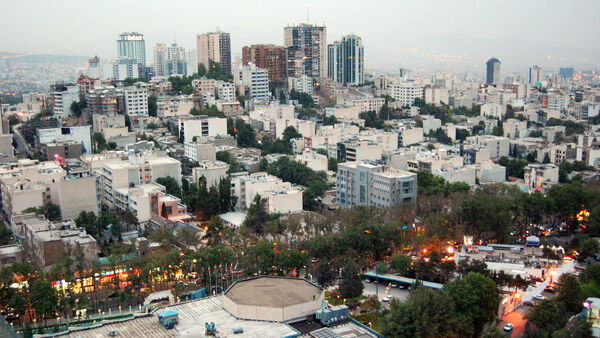Iran Travel Journal





By Rick Steves
In the spring of 2008, my TV crew and I traveled to Iran to film Rick Steves' Iran, Yesterday and Today — a one-hour travel special which appeared on public television stations across the US in 2009.
We produced the TV show to understand and humanize Iran. As we put the show together, I kept this journal to remember and share my personal experiences, lessons learned, and opinions that were shaped by my trip.
Mission: Understand Iran
Last year [2007], a friend from the Washington State chapter of the United Nations Association called me and asked what I could do to help them build understanding between Iran and the US, and defuse the tension that could lead to war. I answered, "The only thing I could do would be to produce a TV show on Iran." Over the next few months, I wrote a proposal for a TV show — no politics, just travel. The working title was Iran: Its People and Culture, Yesterday and Today.
Today I walked into the Iranian Embassy in Athens and picked up the visas for my crew and me. It's official: I'm heading to what just might be the most surprising and fascinating land I've ever visited.
Like most Americans, I know next to nothing about Iran. This will be a journey of discovery. What's my hope? To enjoy a rich and fascinating culture, to get to know a nation that's a leader in its corner of the world (and has been for 2,500 years), and to better understand the 70 million people who call this place home. My mission? To share these lessons through a public TV special.
The permissions were so slow in coming that the project only became a certainty about a week before the shoot. (I had a contingency plan for filming in Istanbul.) Like excited parents-to-be who want to tell the world but hold back until everything looks okay, I couldn't announce our plans until we knew for sure the trip was a go. Because the US does not maintain a diplomatic relationship with Iran, the only way we could communicate was indirectly, via the Pakistani Embassy. Here in Greece, it was strange to go into a relaxed, almost no-security Iranian Embassy...and walk out with visas. We were on our way.
Our 12-day Iran shoot will cover Tehran, Esfahan, Shiraz, and Persepolis. I'll travel with my typical skeleton crew of three: Simon Griffith (director), Karel Bauer (cameraman), and me. We'll also have the help of two Iranian guides: One is a Persian-American friend who lives in Seattle. The other will be appointed by the Iranian government to be with us at all times. This combination will be fascinating...and tricky. We want to be free-spirited, but don't want to abuse the trust of the Iranian government.
Why is Iran letting us in? They actually want to boost Western tourism. I would think this might frighten the Iranian government, since these tourists could bring in unwanted ideas (like those that threatened the USSR, prompting its government to keep most tourists out). But Iran wants more visitors nonetheless. They also believe that the Western media have made their culture look menacing, and never show its warm, human, and gracious side. They did lots of background research on me and my work, and apparently concluded that my motives are acceptable. They say that while they've had problems with other American network crews in the past, they've had good experiences with public television crews.
I hope they understand that, although our approach will be apolitical, that doesn't mean we will simply glorify Iran. While I'm excited to learn about the rich tapestry of Iranian culture and history, I can't ignore some of the fundamental cultural differences. For example, I intend to show the state of Iranian women, which is sure to be very delicate. (Cafés that allow crews to show women breaking modesty regulations can lose their license.) And I hope to learn more about why Iranians always seem to be chanting "Death to America."
I travel to Iran with plenty of anxiety. We considered leaving our big camera in Greece and just taking the small one. I even made sure all my electrical stuff was charged up before flying in. And there are questions: How free will we actually be? Will the hotel rooms be bugged? Is there really absolutely no alcohol — even in fancy hotels? Will crowds gather around us, and then suddenly turn angry? Will the food be as bad as I remember from my 1978 backpacking trip through Iran?
While I'm exhausted from a month of guidebook research and TV filming in Europe, I need to be fresh and quick-minded for on-camera interactions with people on the street (we hope for lots of this), and to simply stay healthy. I'll lose a night's sleep as we fly in, arriving in Tehran at about 4 a.m.
We have a very sketchy script to start with. It will evolve over the next week and a half. Each day, after a long day of shooting, I'll massage what we've shot and learned into the script, print out a new version, and come up with a shooting plan for the next day. My hunch: By our last day, we'll have a fine show.
The pilot said, "We're taking this plane to Tehran"…and nobody was alarmed.
Flying from Istanbul's Atatürk Airport to Tehran's Khomeini Airport, I think about the airports my fellow passengers likely used — Reagan and De Gaulle. The airports are named after four very different 20th-century leaders, but each one left an indelible mark on his nation.
The plane is filled with well-off Iranian people. Their features are different from mine, but they dress and act just like me. As so often happens when I travel, I'm struck by how people—regardless of the shapes of their noses — are so similar the world over. As we all settle into the wide-body jet, I wish the big decision-makers of our world weren't shielded from an opportunity to share an economy cabin with people like this.
I made this same Istanbul-to-Tehran trip 30 years ago. Last time it took three days on a bus, and the Shah was on his last legs. Wandering Iranian towns in 1978, I remember riot squads in the streets and the Shah's portrait seeming to hang tenuously in market stalls. I also remember being struck by the harsh gap between rich and poor in Tehran. I was 23 years old. I believe that was the first time in my life I was angered by economic injustice.
My Istanbul–Tehran trip is quicker this time — three hours rather than three days. And every main square and street that was named "Shah" back then is now named "Khomeini." On my last visit, all denominations of paper money had one face on them. They still do today...but the face is different. At Khomeini International Airport, the only hint of the Shah is the clientele (many of those flying in are likely his supporters who fled Iran for the West in 1978, and are now back to visit loved ones).
As the pilot begins our descent, rich and elegant Persian women put on their scarves. With all that hair suddenly covered, I notice how striking long hair can be — how it really does grab a man's attention. Looking out the window at the lights of Tehran, the sight reminds me of flying into Mexico City at night. Greater Tehran has more people than all of Greece (where I was just traveling).
I'm starting this trip a little bit afraid. I don't know what's in store for us. We are anticipating a challenging and extremely productive 12 days here.
Tehran: Heavenly Pistachios a Mile High
I was hesitant to tell anyone about this trip until it was actually happening. One day into this experience, we are definitely here. Playful Revolutionary Guards, four-lane highways intersecting with no traffic lights, "Death to America" murals, and big, warm, welcoming smiles...Iran is a fascinating and complex paradox.
Tehran, a youthful and noisy capital city, is the modern heart of this country. It's a smoggy, mile-high metropolis. With a teeming population of 14 million in the metropolitan area, its apartment blocks stretch far into the surrounding mountains.
I step out onto the 15th-floor balcony of my fancy hotel room to hear the hum of the city. I enjoy the view of a vast, twinkling city at twilight. Fresh snow whitens the mountain above the ritzy high-rise condos of North Tehran.
As I look straight down, the hotel's entryway is buzzing with activity, as the hotel is hosting a conference on Islamic unity. The circular driveway is lined by the flags of 30 nations. Huge collections of flags seem to be common here — perhaps because it provides a handy opportunity to exclude the Stars and Stripes. (Apart from the ones featured in hateful political murals, I haven't seen an American flag.)
A van with an X-ray security checkpoint is permanently parked outside the entrance. All visitors who enter the hotel needs to pass their bags through this first. It's interesting to see that Iran, a country we feel we need to protect ourselves from, has the same security headaches we do.
Back in my room, I nurse a tall glass of pomegranate juice. My lips are puckered from munching lemony pistachios from an elegantly woven tray — they're the best I've ever tasted (and I am a pistachio connoisseur). I cruise the channels on my TV: CNN, BBC, and lots of programming designed to set the mood for prayer. One channel shows a mesmerizing river with water washing lovingly over shiny rocks. Another shows the sun setting on Mecca, with its Kaaba (the big black box focus of pilgrim worship), in real time.

